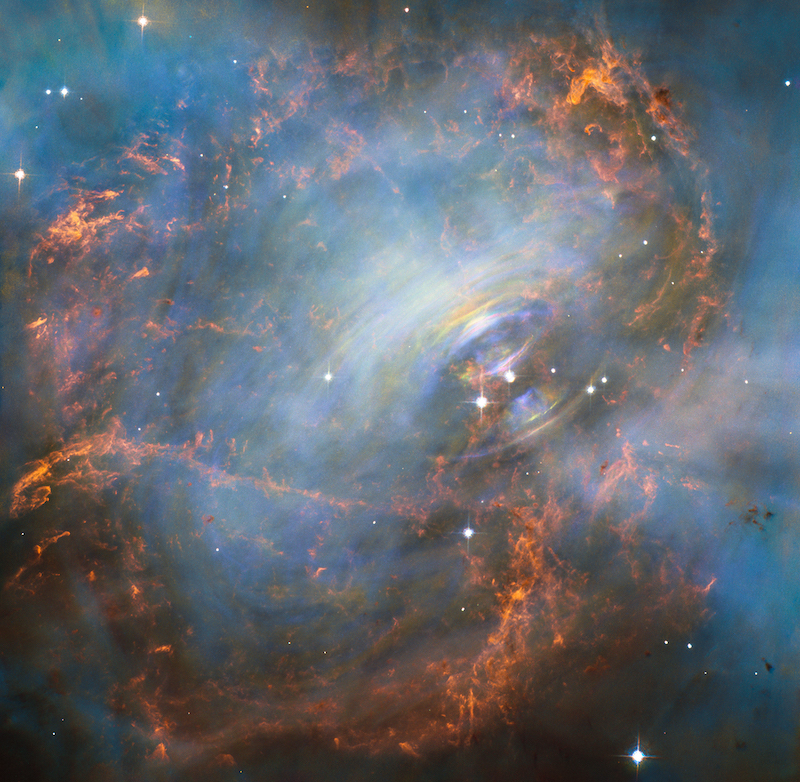What is a pulsar?
A pulsar is a rapidly spinning neutron star. So, what’s a neutron star? A neutron star is the small, incredibly dense remnant of a much more massive star. Neutron stars are so dense that if you could scoop up a teaspoon from off the surface of the star, it would weigh as much as Mount Everest. A neutron star of about 15 miles (24 km) across would contain more matter than our sun. So why are some neutron stars spinning and pulsing?
How a pulsar is born
To learn how a pulsar is born, first you have to learn how a neutron star is born. When a large star – its core about 1-3 times the mass of our sun – goes supernova, the result will be neutron star. Much of the star billows outward, but the core collapses inward. Protons and electrons fuse into neutrons in the star. When the star shrinks but retains its mass, it begins to spin quickly, like a skater that pulls in her arms. The star follows the law of conservation of angular momentum.
Rapidly spinning neutron stars have strong magnetic fields. Such a neutron star emits high-energy beams from its north and south magnetic poles. When these beams are pointed toward Earth and flash across us as the neutron star rotates, we see pulses. So astronomers named these beasts pulsars. Most neutron stars are observed as pulsars. So, all pulsars are neutron stars, but not all neutron stars are necessarily pulsars. But most neutron stars appear as pulsars from the proper vantage point – with their beams aimed at Earth as they rotate – as long as they are emitting enough radiation to be detectable.
The first discovery and little green men
Jocelyn Bell discovered the first pulsar on August 6, 1967. Initially, some thought the pulsar could be a signal from aliens. But on December 21, Bell discovered a second pulsar. Still, Bell and her supervisor, Antony Hewish, playfully nicknamed the first signal LGM-1 for little green men.
The first pulsar is now known as CP 1919 or PSR B1919+21. This pulsar is in the constellation Vulpecula and has a period of 1.3373 seconds.
The most famous pulsar
The most famous pulsar is probably the one that sits inside the Crab Nebula. The Crab Nebula is the remnant of a supernova explosion. In 1054 CE, Chinese, Japanese, Korean and Arab astronomers all reported sighting a new star in the sky.
It took almost another 700 years before someone from Earth saw the dusty, nebulous remains of this exploded star. The pulsar near the center of the Crab Nebula spins about 30 times per second.


Bottom line: A pulsar is a neutron star with its poles aimed toward Earth so that we can see pulses of light resulting from the star’s strong emission when it’s rapidly spinning.
The post What’s a pulsar and why does it pulse? first appeared on EarthSky.
0 Commentaires